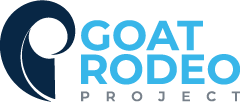Like many things in the last two years, friendships have changed.
Forced social isolation and restricted travel schedules created the opportunity for many people to take a good hard look at their relationships and decide that some of them deserved the dreaded Facebook unfollow.
In Max Dickins’ entertaining and relatable read Billy No-Mates, he explores how men have a friendship problem.
He cites a 2018 BBC/Wellcome Trust survey where 33 per cent of people reported being lonely and a 2018 Movember Foundation survey where one in three men suggest they don’t have any close friends.
Billy No-Mates
Reading the book, I am reminded that at university I had a Billy No-Mates t-shirt and it makes me wonder if I have a friendship problem? I don’t have a massive network of friends and I’m not on Facebook, so I feel some relief through my research for this post when I learn that when it comes to friendships, it’s about quality not quantity. Famous psychologist Dunbar recommends five friends to feel fulfilled. Hello five friends… you know who you are!
When it comes to friendships at work, Gallup reports that only three in 10 employees strongly agree they have a best friend at work.
They don’t define what they mean by “best friend” which I’d suggest is their way of avoiding hurting people’s feelings when they realize they are actually at the casual acquaintance end of the friendship scale. Apparently for Gallup friendship is in the eye of the beholder.
A best friend at work
For me a best friend at work is the person who you can ask a dumb question and get a second opinion from. It’s the person who will hold you accountable and who you trust to vent to when things aren’t going right. Hands up those of you who have a best friend using that definition?
The question forms part of the Gallup Q12® employee engagement measure and in addition to increased engagement, a high score links to higher efficiency, lower absence, lower accident rates, higher innovation and more fun (and who doesn’t want more fun!).
Complementary research helps us understand why this is the case – best buds are more committed to helping each other and communicate better.
The pandemic has been something of a killjoy in all sorts of ways and its wrath has extended into the friendship game.
Gallup report a five-point reduction in the last two years in the number of people who have a bestie at work.
With the forced home working experiment evolving into (too often) unstructured hybrid plans, it’s not surprising we’ve got lonelier.
Many reporters have referred to loneliness as the shadow pandemic with a significant impact on seemingly unrelated physical health attributes including causing aging more than smoking and a higher risk of diabetes.
Organizations role as the mate-maker
With less than 30% of people having a best friend at work, what can organizations, and we as individuals, do to create more friendships at work to mitigate this damaging loneliness?
Get leaders to role-model
If your leaders are advocates for authentic relationships, the wider organization will follow. Of course, you don’t want this to manifest itself by the leadership team becoming exclusionary and macho back-slapping bros. The key is to create a culture of belonging by encouraging them to share stories and to demonstrate authentic friendships where they care for each other – something that can be challenging for some executive teams.
Create opportunities for find a best friend
While there are significant benefits to hybrid working, one of the trap doors we want to avoid is the negative impact remote working can have on building relationships recognizing that it’s easier to build a connection in person. People do value the opportunity to be in person as reported by Microsoft research, so that means leaders need to find real opportunities for people to connect. Having face time to work on a shared problem, a simple regular team lunch, a buddy system or a coffee meet-up are all ways that will help cultivate friendships.
Don’t force it
Our patience for Zoom not-so-happy-hours is long gone, so when it comes to building friendships, it’s important for the organization (and of course the individual) not to force it. People are looking for deeper and more meaningful connections that evolve over time through building trust.
How to make more friends
But we can’t look to our employers to be fully responsible for being mate-makers. We need to take responsibility for developing friendships ourselves and there is some sound advice for those looking to increase their friend quota from Max Dickins’ book and from friendship coaches (who knew there was such a thing!).
1. Be open to having close friends (not just mates) by starting to show vulnerability
2. Build structures (often around activities) where friendships (particularly male friendships) thrive e.g., football teams and cycling groups
3. Access your wider circle of friends – friends of friends
4. Talk to strangers (not sure my mother would approve of that advice)
5. Keep going, even when it’s hard – take the first step in getting people organized and if you join a group make sure you at least 3 times.
We know there is a case for creating human connection, but the personal, commercial and broader societal benefits of having a best friend at work are worth striving for. It is important for organizations to acknowledge the role they can play in facilitating these friendships – not in a forced school playground monitor type way – but by creating opportunities for people to build friendships, role modelling their importance and sharing stories of the positive impact they have.
Let’s go and find some new friends!

